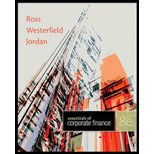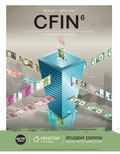
To think critically about: The considerations when choosing between venture capitalists.
Introduction:
Start-up companies are financed by a market that funds new, often high-risk ventures and this market is termed as the venture capital market. The capital that is provided to the firm is the venture capital. An investor who either gives capital to the start-up or supports the expansion of the company is a venture capitalist.
Explanation of Solution
The various considerations in selecting the venture capitalist that are significant are as follows:
- The financial strength of the venture capitalist.
- The style of the venture capitalist.
- The references of the venture capitalist.
- The strategy for exit by the venture capitalist.
- The contacts of the venture capitalist.
Venture capitals are mainly beneficial to start-up companies. A huge payoff for the success of start-up companies is mainly possible from two cases: when the company goes public or when the company is sold to another company.
Want to see more full solutions like this?
Chapter 15 Solutions
Essentials of Corporate Finance
- During the year just ended, Anna Schultz's portfolio, which has a beta of 0.91, earned a return of 8.1%. The risk-free rate is currently 4.1%, and the return on the market portfolio during the year just ended was 9.4%. a. Calculate Treynor's measure for Anna's portfolio for the year just ended. b. Compare the performance of Anna's portfolio found in part a to that of Stacey Quant's portfolio, which has a Treynor's measure of 1.39%. Which portfolio performed better? Explain. c. Calculate Treynor's measure for the market portfolio for the year just ended. d. Use your findings in parts a and c to discuss the performance of Anna's portfolio relative to the market during the year just ended.arrow_forwardNeed answer.arrow_forwardSolve plz nowarrow_forward
 EBK CONTEMPORARY FINANCIAL MANAGEMENTFinanceISBN:9781337514835Author:MOYERPublisher:CENGAGE LEARNING - CONSIGNMENTPrinciples of Accounting Volume 1AccountingISBN:9781947172685Author:OpenStaxPublisher:OpenStax College
EBK CONTEMPORARY FINANCIAL MANAGEMENTFinanceISBN:9781337514835Author:MOYERPublisher:CENGAGE LEARNING - CONSIGNMENTPrinciples of Accounting Volume 1AccountingISBN:9781947172685Author:OpenStaxPublisher:OpenStax College
 AccountingAccountingISBN:9781337272094Author:WARREN, Carl S., Reeve, James M., Duchac, Jonathan E.Publisher:Cengage Learning,
AccountingAccountingISBN:9781337272094Author:WARREN, Carl S., Reeve, James M., Duchac, Jonathan E.Publisher:Cengage Learning,





